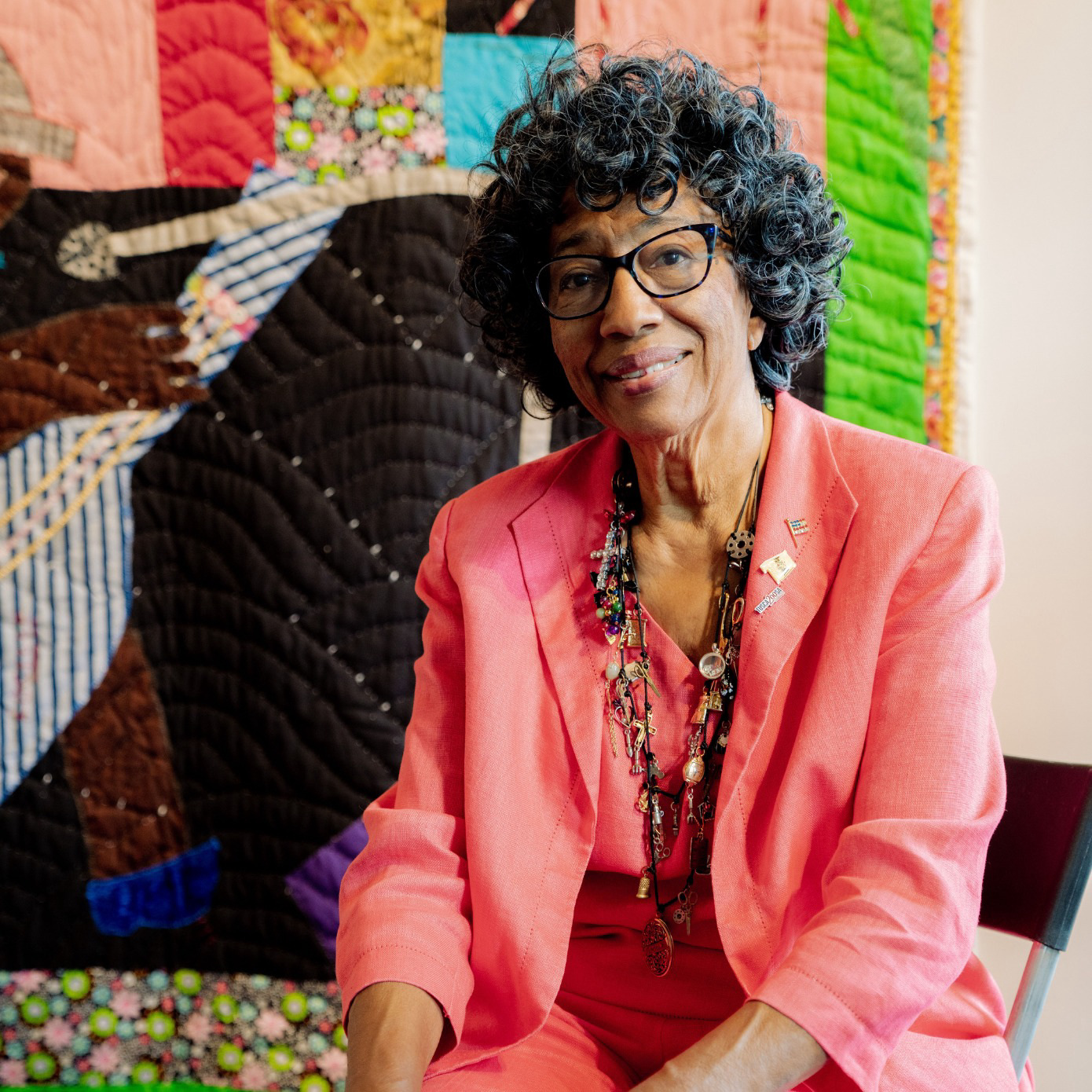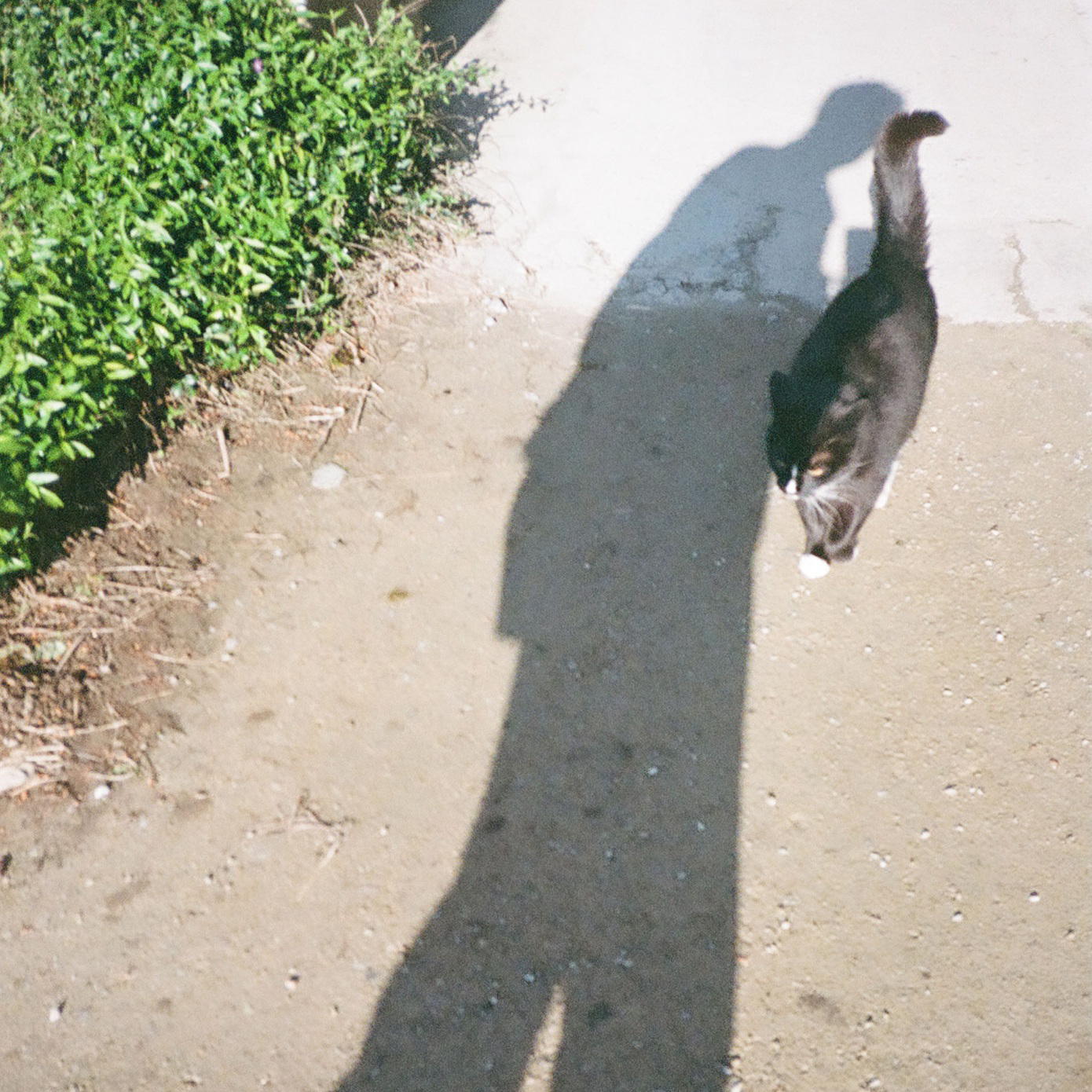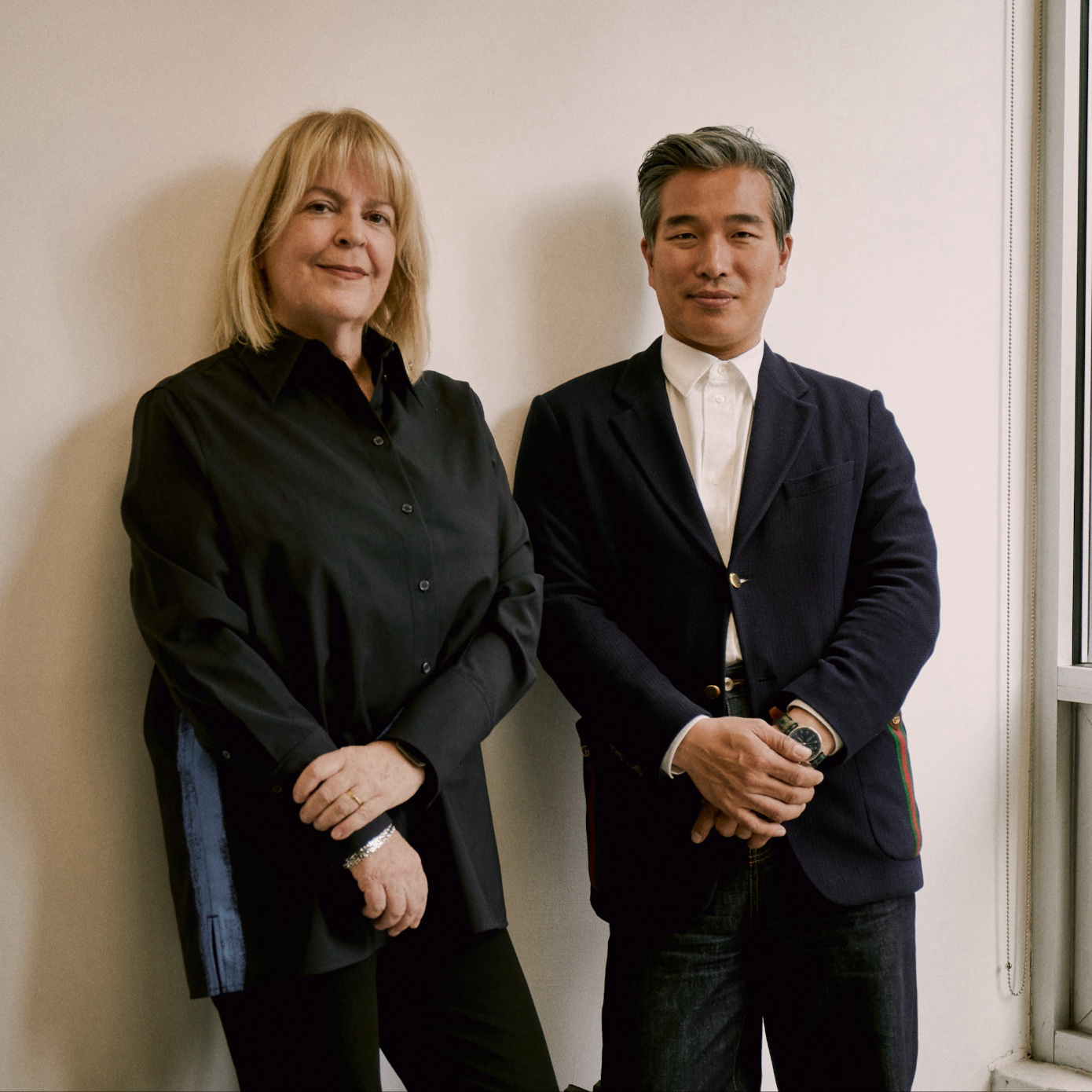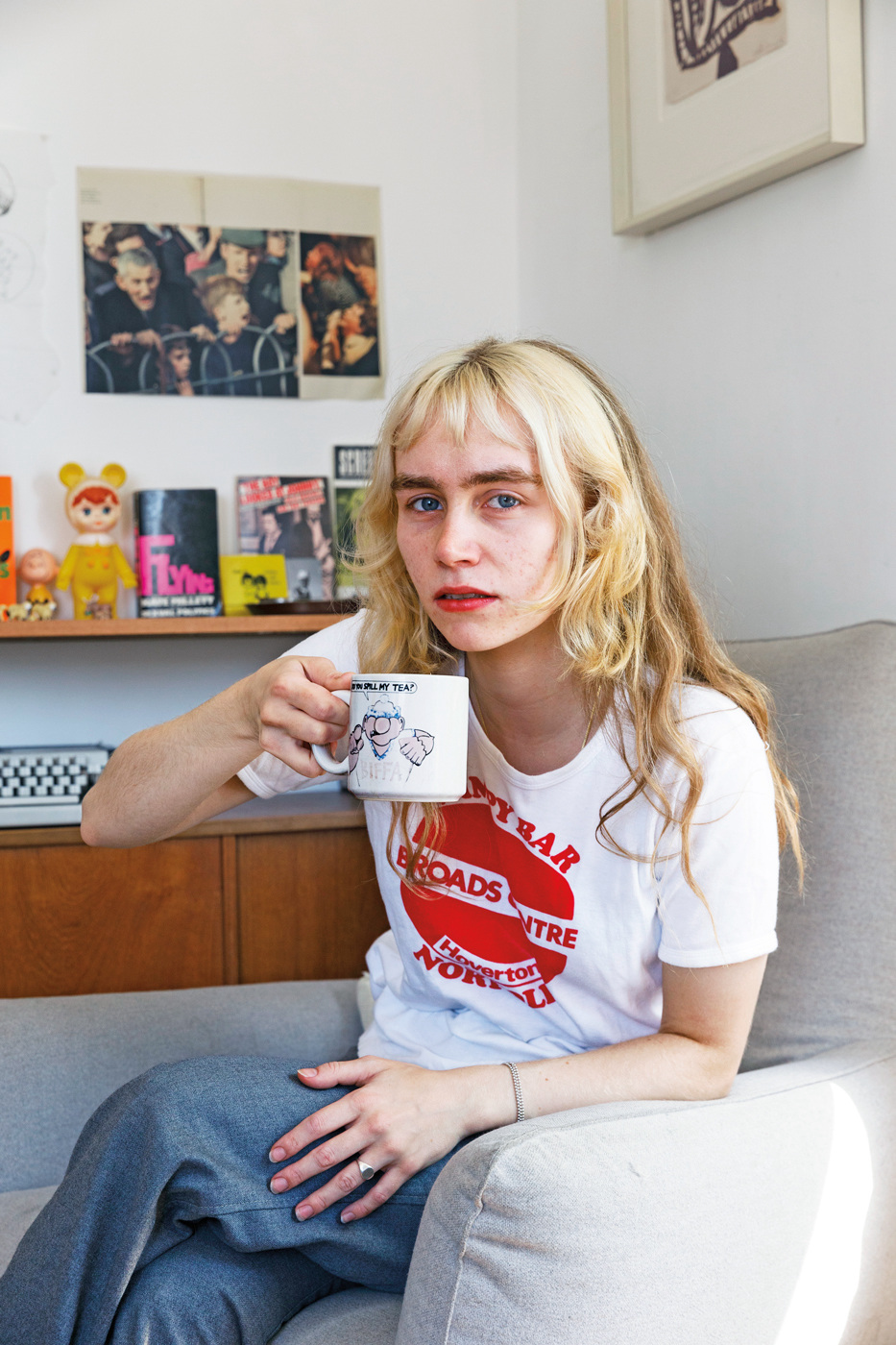
“It always feels sacrilegious,” says Rachel Fleminger Hudson. The North London–born photographer, researcher, and costume designer is sitting on her bed in Finsbury Park, talking about having conversations about her art. At 24, she’s just beginning to unpack what it means for her work to be experienced by others and, moreover, what it means to be not only the creator but the subject.
“Having people interested in your work is so weird,” she says of the array of transportive scenes she erects and captures. Fleminger Hudson’s emotive, richly cinematic work is rooted in 1970s aesthetics and the worlds these material factors reside in and create. With color and texture central to her process, her images look like they could be vintage ephemera; but of course, they are very much the product of a Gen Z artist making work today. “It’s such an interior experience for me. It’s almost like having a room that’s covered in posters and pictures of everything that you love, and then saying, ‘My bedroom’s got loads of posters on the wall.’”
Since winning the Dior Photography and Visual Arts Award for Young Talents this past summer, Fleminger Hudson and her practice have increasingly become a point of exterior analysis after many years of quiet image making. Held in partnership with Luma Arles and the École Nationale Supérieure de la Photographie d’Arles, it recognizes young talents from the world’s most prestigious institutions, and has become a launch pad for emerging visual artists, with the winner receiving a €10,000 grant as well as a commission by the fashion house.
“A lot of it has to do with postmodernism and modernism,” says Fleminger Hudson, returning to her craft. Growing up in Holloway, London, in a family of artists, art teachers, and art critics, visual expression and consideration was always integral. As a child she submerged herself in the cultural artifacts of her parents, listening to '50s and ‘60s classic comedy radio, and watching '70s children’s programs decades after their release. “I’ve always thought the ‘70s were funny, but not funny ha-ha. I wasn’t laughing at it; I was laughing with it,” she says. “It was a time when modernism was at its high point, but it was also falling. If you look at anything from that era, you can see all these modernist elements pushed a step further. That step has this either really horrible or tacky feature that is funny to me. Everything is super-exaggerated in a very knowing way, and I think that is my personality. I am very slapstick.”
Beyond the last cry of modernism, fantasy and reality, the self-knowing humor of a muted ‘70s olive green, the range of emotional expression that seemed so much more accessible in an era before ubiquitous, overly-aware self-construction, punk and bootboy glam, and the ability to recreate an imagined past by living each intricate detail today are all themes explored in Fleminger Hudson’s studio practice, which began when she entered her school’s photography club dark room at 13. Over a decade later, creating for her is a theory-based exercise that includes painstakingly enacted studio sets and historically accurate costume design, but also highlights acts of engagement in everyday life. “Every single thing I’m wearing right now except my pants and socks is from the ‘70s,” she gestures. “And if I could, I would wear it all. I try to because it’s a practice. It helps to have borders around things.”
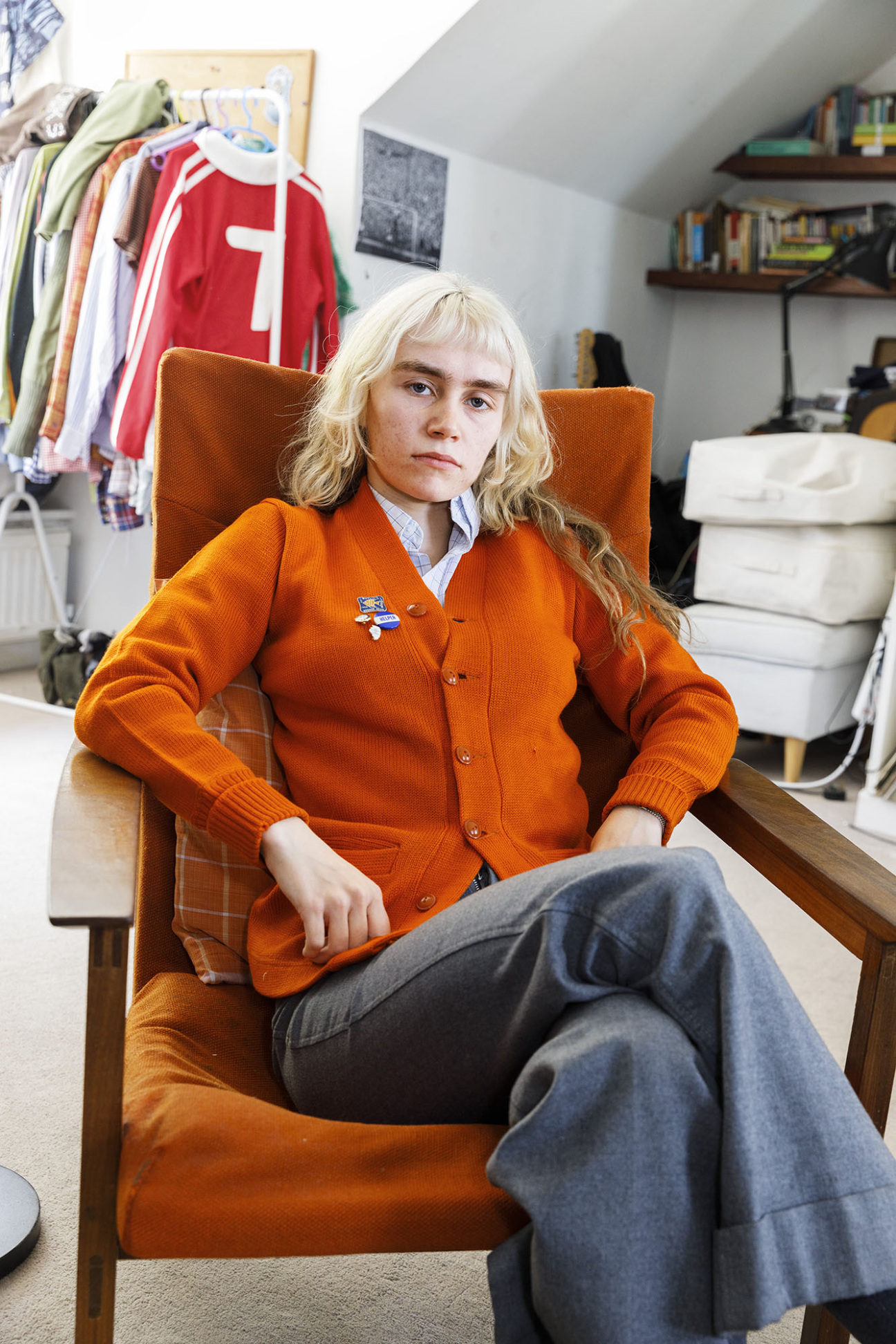
In a sense, Fleminger Hudson’s works represent the peaks of her self-constructed nostalgic experience, and act as windows to a more emotive period, a moment of unexamined existence created in ultra-aware, grinning (de)construction. Take her photos from the Dior Prize: One sees a woman in all red “walking” two dog sculptures with a look of absurd bliss on her face. Others show retrofit football fans grasping for autographs and leaning, vulnerably, over the stands, completely unguarded in their desire. The latter is a direct reference to the work of Iain S.P. Reid, an Edinburgh-born photographer who captured Manchester United hooligans in the mid-‘70s. The scenes are bold, emotionally unfiltered, and tied to a specific time and place.
“It’s all about pushing a moment to make a moment. You push a moment, so you get these still fragments out of it,” she explains. “There is a lot of bravery in the characters. I’m interested in moments of personal expression, which is something that people don’t do a lot of the time.”

